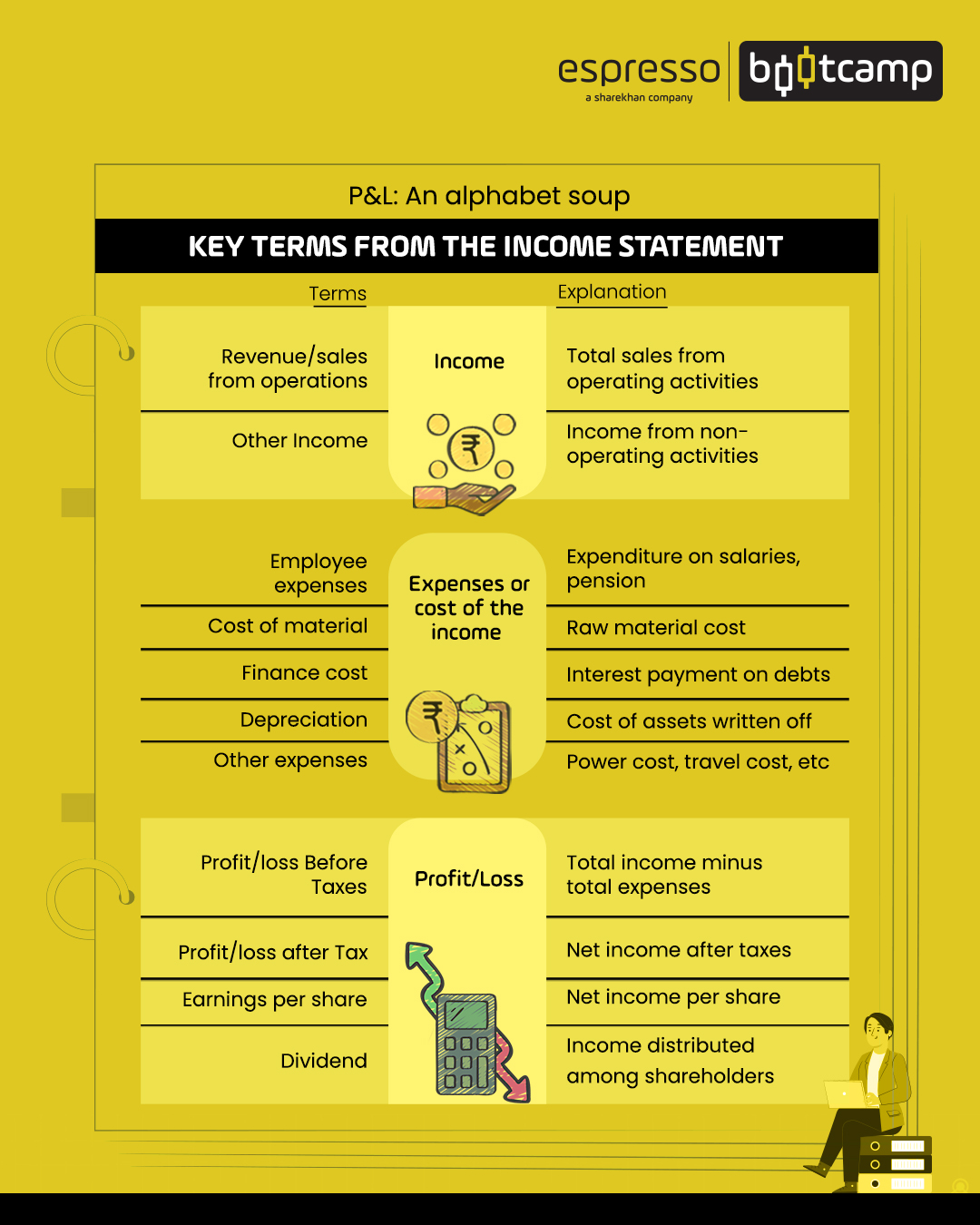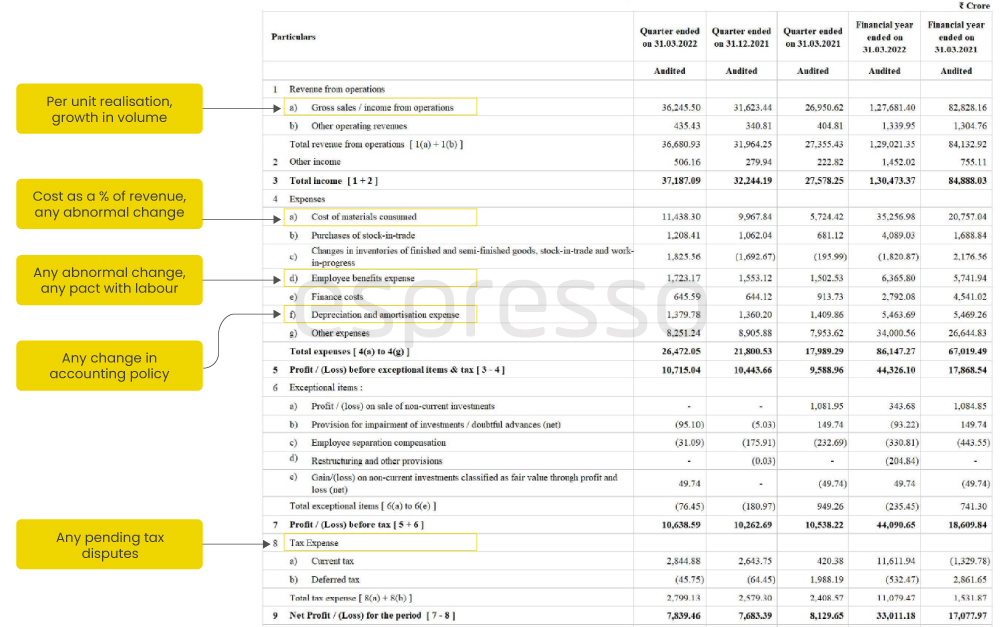Profit and loss are integral to every business. No matter how small it is, a profit and loss statement is drawn up to ascertain how a business is faring.

For a company, the Profit and Loss statement also referred to as the P&L statement is part of the financial statement that summarises its performance during a given period of time, normally a year. If you’re a shareholder, this should be an interesting document as it indicates the company’s health, management’s ability to carry on business successfully and, most importantly, the returns shareholders can expect in terms of dividends.
Points to look for
You need to focus on the following while analysing a P&L Statement:
- Comparison
- Ratio analysis
- Reasons for major variations
- Past trend
- Future estimation
Below are the P&L Statements of four companies belonging to different sectors. Take a look:
1. Manufacturing.jpg)
2. Hospitality.jpg)
3. IT.jpg)
4. Banking.jpg)
From the above examples, it is evident that revenue and expenditure heads for different companies are different.
The banking company derives most of its revenue from interest, while the manufacturing company’s main source of revenue is the sale of its products. Similarly, their main heads of expenditure, too, differ depending upon their nature of business. While the banking company spends most of its resources on interest payment, the manufacturing unit uses a substantial portion of its revenue on raw materials and production. Therefore, a comparison of the P&L account and ratios of one company with any other company’s P&L account is meaningless unless their nature of business is the same.
How to assess a P&L Statement

Keys to P&L Statement Analysis
Detailed study: P&L Statement analysis includes comparison (with the company’s past and peer group), ratio analysis and ascertaining trends. The statement should always be read along with the directors’ report, management discussion and analysis, auditor’s report and notes on accounts. Wisdom would lie in analysing the data of the past several years instead of focusing on the past two years so you can accurately calculate the trend.
Analysing sales: While analysing sales, always ascertain the per unit realisation to assess whether it’s increasing, decreasing or stagnant. Focus on value and volume growth. Volume growth indicates market expansion for the product and its acceptance. If the company achieves growth through both value and volume expansion, it presents one of the ideal conditions for investment. Also, while comparing the sales revenue of the past several years, you need to make provisions for inflation to find real growth.
Attention to margin: Special attention has to be given to margin – whether it is contracting or expanding - and you need to find out the reasons behind the changes. Margin is a percentage of profits to total sales that can be derived from the profit and loss statement. These can be found either in the directors’ report (including management discussion and analysis) or the company’s conference call transcription.
Assessing expenses: You need to check whether there is any abnormal change in the expenses and if any, the reasons behind it. For example, employee costs might have gone up because the company might have introduced VRS, which may involve a one-time payout. Also, a new wage pact with the labour union might have resulted in a substantial change in employee costs.
Reviewing management discussion: Usually, the management gives suitable explanations for substantial changes in the cost during their discussion and analysis. Go through the auditor’s report as it usually specifies where the company has not followed the accounting principles and their impact on the company’s profits.
Pending taxes: It is always necessary to check the P&L statement for any pending tax demands on the company, and if sufficient provision has been made.
Comparisons: Comparing data from past P&L statements will help ascertain the trends and, thus, future projections. Comparison with other companies in the same sector will help assess if the company’s performance aligns with the industry’s performance. Also, a comparison of the margin with that of the industry average will indicate whether the company’s stock price deserves any premium. Further, how the company has fared under each head of expenditure (as a percentage of revenue earned) will also throw light on how efficiently the company’s operations are being carried out.
Points to remember
- P&L Statement can explain only those items which can be expressed in terms of money.
- P&L does not highlight qualitative aspects of management or operations.
- Despite its drawbacks, P&L Statement is among the most widely referred sources of data for making investment decisions.
 0
|
0
|
 0
0
 Modules
Modules

 Watch
Watch 
